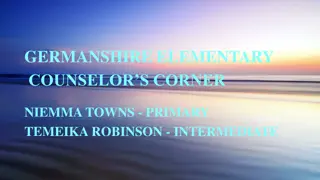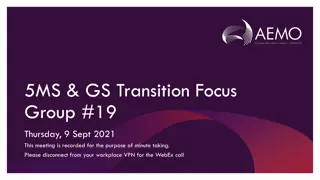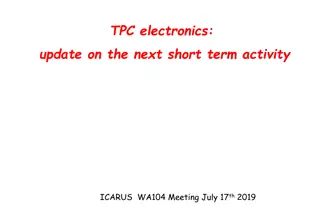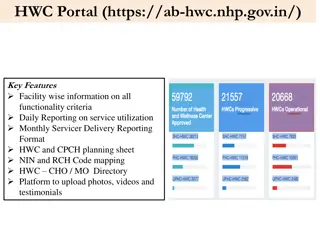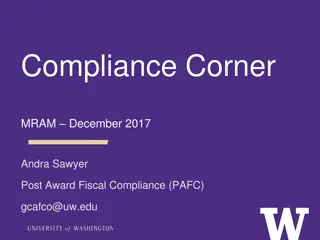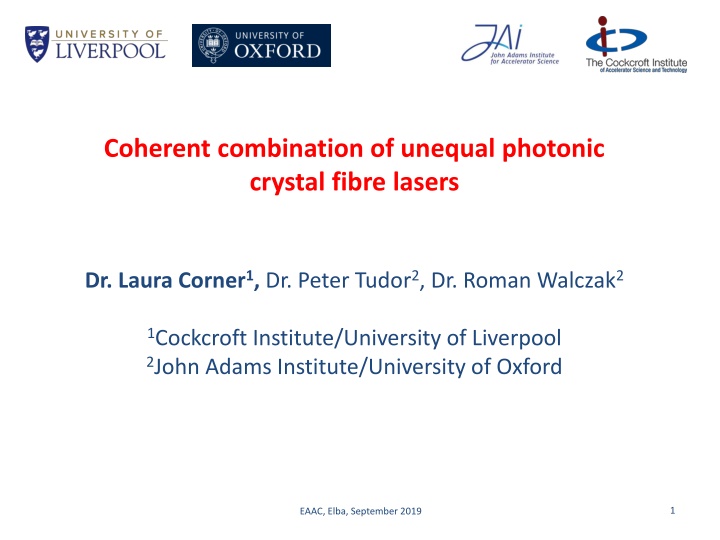
Combining Unequal Photonic Crystal Fibre Lasers for High-Power Applications
"Explore the potential of combining unequal photonic crystal fibre lasers for particle acceleration in high-gradient technologies. Discover successful experiments, challenges faced, and advancements in laser pulse coherence. Dive into the innovative applications and implications of this cutting-edge technology showcased at EAAC Elba in September 2019."
Download Presentation

Please find below an Image/Link to download the presentation.
The content on the website is provided AS IS for your information and personal use only. It may not be sold, licensed, or shared on other websites without obtaining consent from the author. If you encounter any issues during the download, it is possible that the publisher has removed the file from their server.
You are allowed to download the files provided on this website for personal or commercial use, subject to the condition that they are used lawfully. All files are the property of their respective owners.
The content on the website is provided AS IS for your information and personal use only. It may not be sold, licensed, or shared on other websites without obtaining consent from the author.
E N D
Presentation Transcript
Coherent combination of unequal photonic crystal fibre lasers Dr. Laura Corner1, Dr. Peter Tudor2, Dr. Roman Walczak2 1Cockcroft Institute/University of Liverpool 2John Adams Institute/University of Oxford 1 EAAC, Elba, September 2019
Applications for particle accelerators Laser plasma wakefield acceleration (LWFA) is a promising technology for high gradient particle acceleration - source of compact, perhaps cheaper accelerators. Current laser drivers for LWFA: Very high peak power (100s TW/PW systems, J, <100 fs) Low repetition rates < 10Hz (low average power) Inefficient expensive to run Fibre lasers: High repetition rates (> kHz) Low pulse energy ( mJ) Single fibres considered limited to < 10GW peak power (Schimpf et al. J. Opt. Soc. Am. B. 27 20151 (2010)) Can we use this technology to make both high peak and average power lasers? Combination of many low energy pulses into one high energy pulse! EAAC, Elba, September 2019 2
Coherent combination of laser pulses Fig: P. Tudor EAAC, Elba, September 2019 3
Coherent combination of fibre lasers Highly successful technology: 8 pulsed fibre lasers combined 1mJ, >1kW average power, 260fs, 1MHz M ller et al., Opt. Letts. 41, 3439 (2016) 64 continuous wave fibre lasers combined Bourderionnet et al., Opt. Exp. 19, 17053 (2011) Kienel et al., Opt. Letts. 41, 3343 (2016) 8 channels combined with spatial and temporal division 12mJ, 56kHz, 260fs Guichard et al., Opt. Letts. 40, 89 (2015) 2 fibre lasers combined passively in Sagnac interferometer 1.1mJ, 50kHz, 300fs All experiments carried out with identical fibre amplifiers Investigate combination of non-identical fibres EAAC, Elba, September 2019 4
PCF combination experiment Fig: P. Tudor /4 /2 /2 Fibre differences: Core size (70 m vs 85 m) Length (520mm vs 820mm) Internal structure (PM stress rods) External structure (End caps) Seed laser: 6.5MHz Stretched pulse ~ 250ps Compressed pulse ~ 380fs EAAC, Elba, September 2019 5
Combination results 2 unequal fibres have been successfully combined Major issue matching wavefronts from different core sizes Total system efficiency of 88.4% Input pulse energy - 40 nJ (85 m fibre), 120 nJ (70 m fibre) Average output power of system 20.3 W Output pulse energy - 3.1 J (before compression) Peak power 5.8 MW Pulse duration 380 fs 70 m fibre gain - 12.6 dB 85 m fibre gain - 18.6 dB EAAC, Elba, September 2019 6
Combination results - spatial Desired polarisation state Orthogonal polarisation state Excellent rejection at dark port and spatial quality of combined beam EAAC, Elba, September 2019 7
Combination results temporal ~ 380fs pulse width (Assumed Gaussian) Pulse duration unaffected by combination EAAC, Elba, September 2019 8
Conclusion and future work Two unequal fibres successfully combined stable for many hours, 88.4% combination efficiency, 380fs pulse duration, 5.8MW peak power, > 20W average power at 6.49MHz. As good as combination experiments with equal fibres. Aim: reduce rep rate (10s kHz) and increase pulse energy (mJ) from PCFs for LWFA driver combination. Replace step index fibre amplification stage with PCF to maintain bandwidth and keep 200fs FTL pulse duration. Investigate other (scalable) combination technologies. EAAC, Elba, September 2019 9






